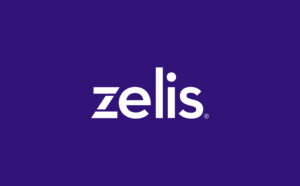
Kaitlin Howard is a researcher and writer producing insightful content across the healthcare revenue cycle. She has written and produced content for Zelis, Waystar, and Recondo Technology, as well as agencies. With a B.A. in English and Writing from University of Denver, Kaitlin stays current on market updates on claims management and healthcare payments, publishing a regular educational blog series on industry trends and Zelis offerings.
At Zelis, our very purpose is to make healthcare more affordable and transparent – with a careful, methodical approach to removing points of friction in the system. As such, we commissioned a third-party study to measure the maturity curve of harmony in the healthcare financial experience: The Payment Harmonization Index.
The definition of harmony – in terms of our Zelis strategy – is to bring together the various stakeholders in healthcare – payers, providers, and members (or consumers) to deliver a better financial experience for all.
Our first installment of this intended evergreen index surveyed 214 payer executives to understand how their actions enable, or detract from, systemic harmony.
Through this study, we identified five drivers of harmony – each mapped to business aspects of the healthcare experience.
- Collaboration – both internally among departments and externally with providers
- Clarity – of choice and communications for members
- Precision – driven by data and analytics
- Accuracy – with claim and bill reviews performed pre-payment
- Speed – enabled by electronic payments and automation
The landscape
Right now, there are two words at the top of everyone’s list: provider satisfaction.
The game plan? Optimizing financial performance, increasing workflow automation through the electronic receipt of remittance data, and settling funds faster using electronic disbursements.
But strategies can only come to fruition through action.
For health plans and TPAs, those actions look like increasing operational efficiencies and reducing administrative costs.
58% of healthcare payers currently report working with their network team or directly with providers to proactively enroll new and renewing providers into ACH/EFT (instead of checks) at the time of contract.
But executives also seek to convert providers that receive checks to receiving electronic forms and ACH.
This is a delicate dance for payers as they need to ensure provider satisfaction and keep a sharp eye on claim payment accuracy.
The missing piece, however, is provider communication.
Payers must engage with providers throughout the year, not just at the outset of contracts. Establishing a regular and unpressured cadence of communication can alleviate provider hesitations about breaking the paper remittance habit, while further reducing provider abrasion and improving satisfaction.
Key findings
B2B disbursement.
Business-to-business (B2B) payments methods have come a long way since ACH/EFT. And not a moment too soon.
But healthcare payers and third-party administrators (TPAs) are seeking to go beyond those tried-and-true methods, finding alternative ways to optimize financial performance and increase workflow automation.
Workflow efficiency.
According to 45% of respondents, increasing the efficiency of workflows through electronic receipt of remittance data is very important.
Moreover, giving providers the ability to settle funds through receipt of electronic reimbursement and automating workflows via receipt of electronic remittance and B2B payments data also ranked as high importance for respondents.
But there seems to be a disconnect.
43% of payments executives remain inactive (or reactive) in converting providers into receiving electronic forms and ACH/EFT.
Payment methods.
Paper checks, ACH, and wire transfers still dominate B2B payments in healthcare. Virtual cards currently only play a small role in reimbursements, but they are poised to be the next big thing in payments for both in- and out-of-network providers.
When done right, real-time payment options can boost provider satisfaction. But payers must ensure they address the additional pieces to the puzzle. Think: tying the payment to the provider, enabling real-time access to claims, and posting to patient accounts.
And while payments executives communicate with their payment integrity counterparts, they rarely collaborate with their network provider and network optimization teams, creating a less than harmonious payments experience.
Next best steps
Expand reimbursement options.
In order to modernize your payments process, you must offer multiple provider reimbursement options. Partner this with allowing payment method flexibility and your expanded options will yield dividends.
Don’t neglect out-of-network providers.
A larger menu of reimbursement options can work wonders for improving provider abrasion. Hello, streamlined payments.
On the flip side, this also creates a favorable relationship that may, in time, help convert out-of-network providers.
Explore beyond ACH/EFT, wire transfer, and paper checks.
While payers are no stranger to virtual card, real-time B2B payments, and other emerging digital payment options (e.g., Zelle), adoption still remains slow.
It’s time to revisit and modernize your payment options.
Be intentional when collaborating.
Inadequate collaboration between B2B payments officers and network development and management teams may be the culprit behind the inefficiencies in electronic payments adoption.
Closer and more intentional collaboration can bring these two parties more in sync and improve provider satisfaction.
The wrap up
In the healthcare industry, we often use phrases like “removing friction” or “increasing engagement.” Meaning: the whole healthcare process needs to be more collaborative, smoother, and easier-to-understand.
We developed this survey to better understand and measure factors like the current forms of payments available to providers, as well as the appetite for expanding electronic payment methods in reimbursements and overpayments (disbursements) to in-network and out-of-network providers.
Want to dissect the full report? Find it here.
Questions about how to get your own harmonization score and strategize accordingly? Connect with us.



